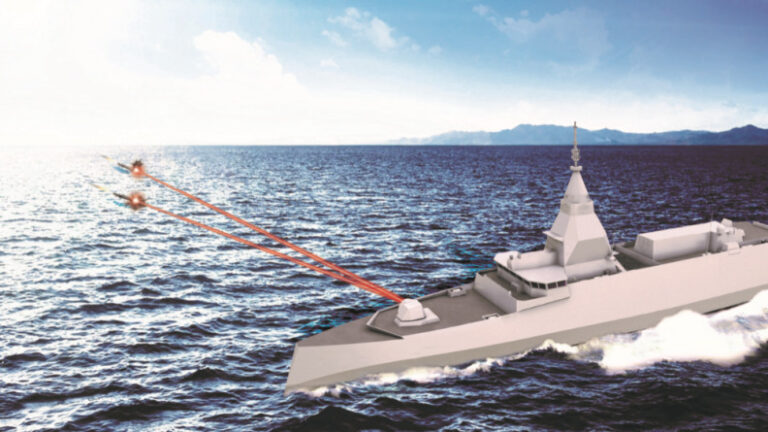
The French arms procurement agency has contracted a consortium of domestic firms to develop a demonstrator for a new laser weapon system, slated for fielding by 2030.
Known as the New Generation Laser Defense System, or Syderal, the demonstrator is intended for counter-drone and short-range air defense roles.
It will combine multiple laser beams to maximize effect and efficiency, delivering a power output of several tens of kilowatts.
MBDA, Safran Electronics & Defense, Thales, and CILAS are developing the system, drawing on their expertise in laser beam combining, high-precision video tracking, and adaptive optics — capabilities expected to make it more efficient than similar systems worldwide.
Helma-P Laser
Cilas has already deployed its Helma-P counter-drone laser system at the Paris 2024 Olympics.
The system is capable of detecting, identifying, tracking, and neutralizing agile targets with high precision in both operational theaters and urban environments.
It can neutralize drones, radars, rockets, and improvised explosive devices at ranges exceeding one kilometer (0.62 miles).
Scalable to Counter More Complex Threats
The Syderal demonstrator is expected to build on experience gained during the development of the Helma-P system.
It represents a first step toward achieving higher power levels and countering more complex threats such as missiles.
As part of the project, Cilas and Lumibird were awarded a 10-million-euro ($12-million) contract in 2024 to develop a laser source capable of combining multiple beams to achieve very high power.
The program adds to a growing number of international initiatives aimed at countering drones, rockets, and artillery more cost-effectively, including Germany’s Laser Weapon Demonstrator, the UK’s DragonFire, and an Italian Navy project led by MBDA Italia and Leonardo.